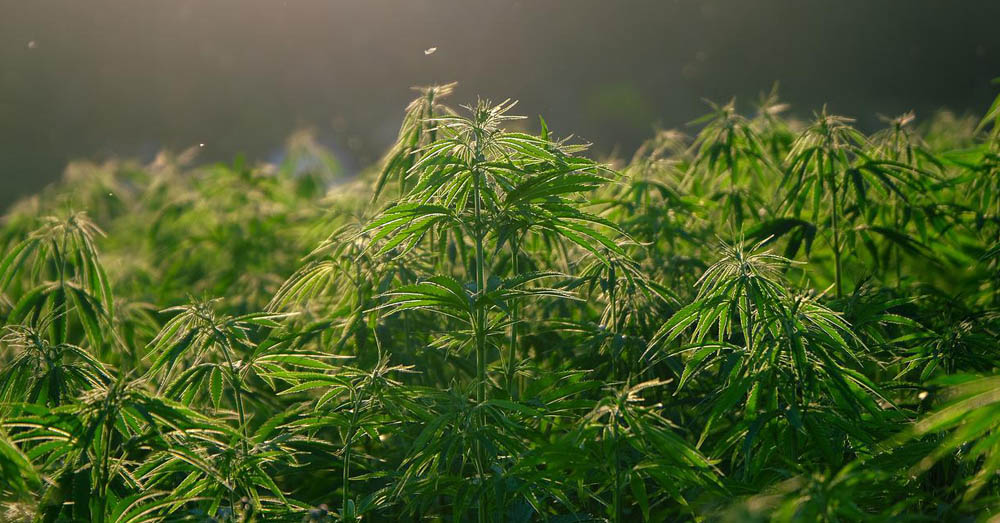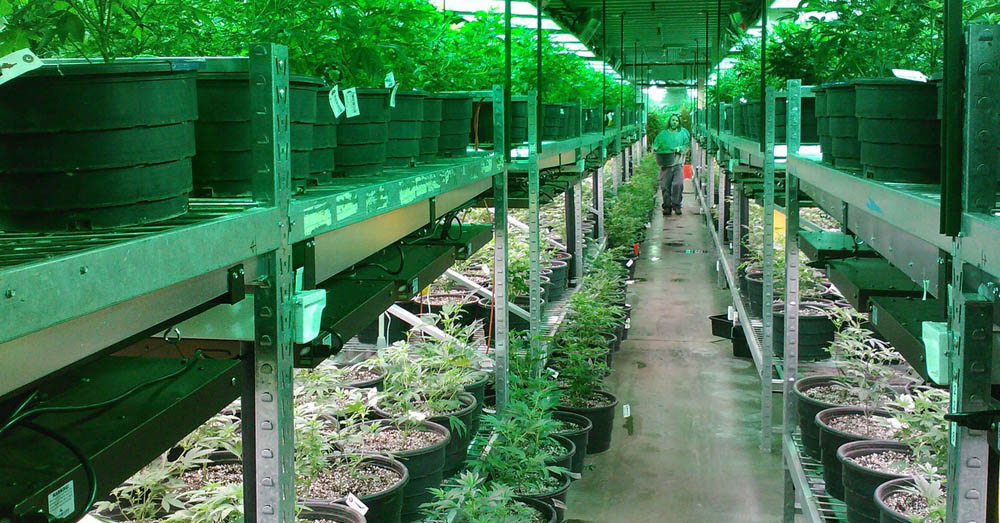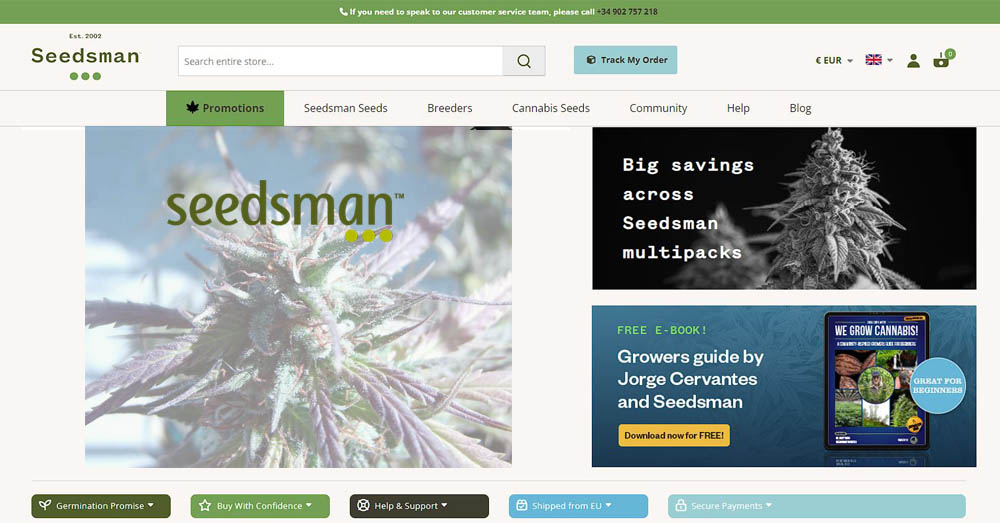Are you looking for a way to cool a grow tent? Not sure what the best method is or where to begin?
I’ll give you the 5 best methods to cool a grow tent, including information on how to perform each method. We’ll also discuss what grow tents are, what makes them hot, and more alternative methods.
I’ll also go over why it’s important to keep the temperature inside a grow tent cool and signs that your plants need cool air to watch out for.
5 Best Methods to Cool a Grow Tent
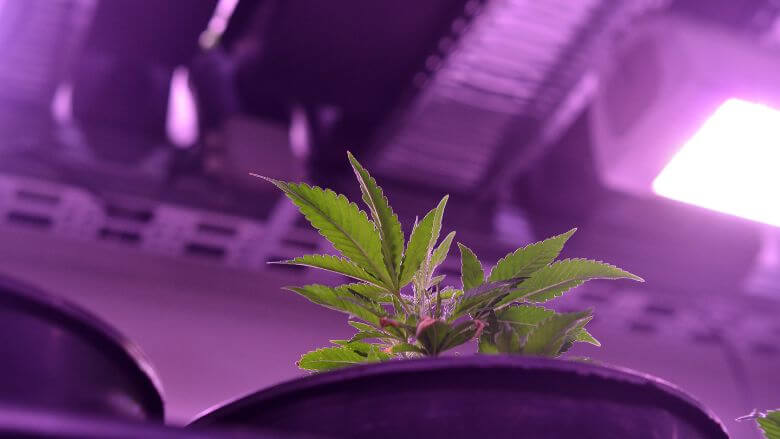
Here are the five best methods you can use to cool a grow tent. You can use one method, multiple, or all of them to achieve your desired results.
1) Make Sure That a Proper Ventilation System Is Installed
The flow of fresh air can help hot air and excess heat inside to escape. A good ventilation system allows for cooler air to be injected in at the same time. Remember, heat rises.
Most grow tents have at least one exhaust vent, although they usually have more air vents. However, not all grow tent setups are using them properly.
You can increase proper airflow in your grow room by relocating the fan position and adjusting the speed. The duct opening can also be moved to areas with cooler air.
Also, ensure that the vent ducts are sealed properly. Doing this decreases the temperature inside because warm air can escape more efficiently.
2) Use an Air Conditioner
Air conditioners are one of the best tools you can use to control grow tent temperature. Keeping an optimal temperature keeps plants healthy.
You can choose between two air conditioning types: a mini air conditioner or a split air conditioner.
A mini (or portable air conditioner) is best for indoor growing. They output less power for cooling but aren’t as expensive as other air conditioning units and can be easily moved around.
Split type class is a bigger air conditioner type, but is more expensive. They’re also not as portable because, like your central air conditioning, they need to be permanently installed.
However, it’s more effective at producing cool air compared to one small air conditioner. If you have a big grow room, a split type is better.
3) Avoid Lower Humidity Inside the Grow Space
Another way of keeping a grow room cool is by keeping it humid. In the same way that we cool off in hot weather with mist, you can manage heat with humidity.
The higher the humidity level, the more you’ll see cold temperatures. However, this doesn’t mean you should always crank it up to max humidity levels.
For example, if you’re growing cannabis indoors, you’ll need to keep the humidity between 40 and 60%. Marijuana plants thrive in this humidity range.
Cranking the level too high might negatively affect your grow tent environment and plants.
4) Switch to LED Grow Lights
The traditional HPS, MH, or HID lights can result in slightly higher temperatures, especially if the outside temperature is high.
An LED grow light is more efficient and produces less heat than these other options. LED lights use less power while also having a better light spectrum.
LED grow lights also last longer than other grow lights. They’re more durable and can survive more than one or two grow cycles, without the need to switch them out.
They’re superior in every way to more traditional grow lights except for the initial purchase cost, although prices are going down.
I’d really suggest getting LED grow lights because they will save money in the long run.
5) Keep Ducting Simple
The longer your ducting is, the harder the exhaust fans will need to work for proper air circulation. This will generate heat in itself.
Airflow gets harder to push when there is longer air ducting and when there are too many twists and turns in the ducting.
Because of this less efficient air flow, your exhaust fan will generate more heat because it will spin faster.
Here’s a quick calculation for you to see if your exhaust fan is working too hard: every 90 degrees the duct turns, your exhaust fans will work 5% harder.
Finally, make sure to use good-quality ducting materials. Gaps and holes will lead to lower efficiency in their ability to pass air.
What Is a Grow Tent?
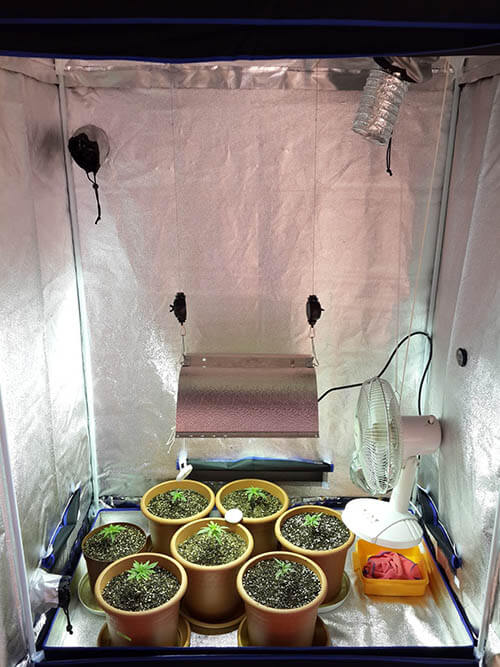
Grow tents, a grow space, grow room, or any other similar term refers to an area for growing plants indoors, or places where you wouldn’t normally consider growing plants.
Most grow tents have reflective material to keep excess heat out. They’re lightproof, waterproof, and have many vents to allow air inside and out for air exhaust.
The best grow tents should also include at least one grow light, a fan, and a carbon filter. This carbon filter helps keep odors from escaping into your room.
The advantage of grow tents or a grow room is that you can have a whole garden ecosystem inside your house to grow any kind of plant you want.
They’re also isolated from the rest of your house, so you can keep them in the same room as you while still being pest and mess-free.
What Makes the Grow Tent Hot?
Before using any of the methods I’ve previously outlined to prevent hot air inside the grow tent, you should understand why grow tents heat up in the first place.
Hot Air From Grow Lights
Grow lights are by far the largest contributor to hot air inside your grow tent. One fix to this is increasing the distance between the lights and the plants.
Another quick fix is getting air-cooled lights or water-cooled lights to increase grow tent cooling and reduce the excess heat usually generated by standard grow lights.
Improper Ventilation
Another reason why your grow tent gets hot is that fresh air circulation isn’t present. If the air intake doesn’t work, it will be mostly dead air inside.
You’ll need air conditioners or ventilation to keep your plants from getting too hot, especially when you grow indoors where no natural wind blows.
Many grow tent options have built-in ventilation system intakes and exhausts. Pick one that best fits your needs when it comes to room size, type of plant, etc.
Improper Insulation With Hot Surroundings
Outside heat can easily get in without proper insulation. It’s even worse if you live in climates with hot summers.
5 Alternatives for Cooling a Grow Tent (Without an AC)
If you don’t want to use air conditioners, there are alternate ways to cool a grow tent. Here are five alternatives:
1) Use Fans in the Grow Tent
There are three types of fans that you’ll want to consider adding to your grow tent. These are inline fans, oscillating fans, and exhaust fans.
An inline fan sits in the ducting that controls air intake and exhaust. It removes hot air and replaces it with colder air from the outside. Inline fans should ideally do this once per minute.
An oscillating fan circulates air flow inside the grow tent. You might need more than one oscillating fan to make sure no molds develop on the plants.
Unlike the inline fan, an exhaust fan only takes air, excess moisture, and bad odors out of the grow tent. Just make sure to point it away from you, so it doesn’t smell bad.All in all, having the best fan system for your grow tent is a MUST!
2) Use Water Chillers
Using water chillers is another great way to maintain the temperature inside your grow tent.
They’re machines that do two things at once: maintaining humidity levels while taking out hotter air vapors.There are water-cooled and air-cooled chillers that are available and perform the same function.
3) Use Dry Ice
You can use a box of dry ice to cool down a grow tent. It doesn’t require any maintenance or a complicated installation process to work.
Dry ice is frozen carbon dioxide that immediately turns from a solid into a gas (vapor). This frozen carbon dioxide is so cold that even the vapors that come off it have a chilling effect.
To use this method, all you need to do is place a couple of cubes into a box and place it in an area of your grow tent where the oscillating fans can move the vapors around.
4) Only Run Grow Lights at Night
Instead of running your grow light during the day, you can switch the hours that they’re on to nighttime when you’re asleep.
This is ideal because it allows for the lights to function when it’s naturally colder, reducing the temperature inside the grow tent.
Another added benefit is the convenience – all you have to do is turn the grow lights on before you sleep and turn them off when you wake up.
5) Use a Swamp Cooler
A swamp cooler is a machine that’s more efficient than an air conditioning unit. They work by cooling air through the evaporation of water.
They also have the added bonus of helping to increase the humidity level in your grow tent climate.
Why Should I Keep the Grow Tent Cool?
You should keep grow tent temperatures under control because your plants may need a specific temperature and humidity level to grow properly.
Some plant species are very sensitive to temperature and humidity changes that they may die if you get temps wrong by just a few degrees or humidity wrong by a few points.
Additionally, avoiding high temperatures is important because of unwanted algae growth, fungus growth, and the build-up of strong odors that you won’t want inside your room.
What Is the Best Temperature Inside a Grow Tent?
The best temperature to use for your grow tent fully depends on the plants that you’re growing inside it.
Some plants like the cannabis plant (marijuana) prefer a temperature between 68 and 77 degrees Fahrenheit. Going below or above this can slow down growth or kill the plant.
The general rule when it comes to the absolute maximum temperature inside grow tents is 85 degrees. Go above this and you risk your plants wilting or dying completely.
Signs that Your Plants Need Cooling
The first sign when checking if your plant needs cooling is if the leaves are wilting. This is because the water has fully evaporated from the leaves since it’s too hot.
Another sign is having “fox tails” on your plant leaves. These are extra smaller leaves growing on top of mature leaves. This is a sign that the plant is stressed out.
Finally, if the plant has brittle and curly leaf tips, then it means it’s too dry and hot. This is because the leaves have lost all their moisture and are curling up in response.
Frequently Asked Questions
After learning more about how to cool a grow tent, you might still have some related questions. I’ve answered the most commonly asked ones below.
What Should I Do if There is Too Much Heat Inside My Grow Tent?
Go through the different methods I’ve laid out earlier. The one I’d recommend trying out first is proper ventilation through ducts and fans.
This is probably the most crucial part of any grow tent aside from proper lighting because it determines plant growth speed, humidity control, and lessening algae and fungus growth.
Check and see if you have enough exhaust, intake, and circulation fans inside the grow tent to have a constant inflow and outflow of air.
Should I Run My Exhaust Fan in My Grow Tent All the Time?
You shouldn’t run any fans inside your grow tent forever. The general rule when it comes to running fans is that they stay on only when the grow lights are on.
At the most, you should leave only one fan on. This is because the temperature in the grow tent is already much lower because of the lights being off.
Running the fans when the lights are off could cause excess heat to be generated and would also be a waste of electricity.
Conclusion
Even the largest grow tents can become environments that need constant checking and adjustment to function properly. You need a lot of equipment and patience to handle it well.The most important methods to cool down the tent are to ensure correct ventilation, use cooling devices, LED grow lights, and the proper amount of fans inside.


